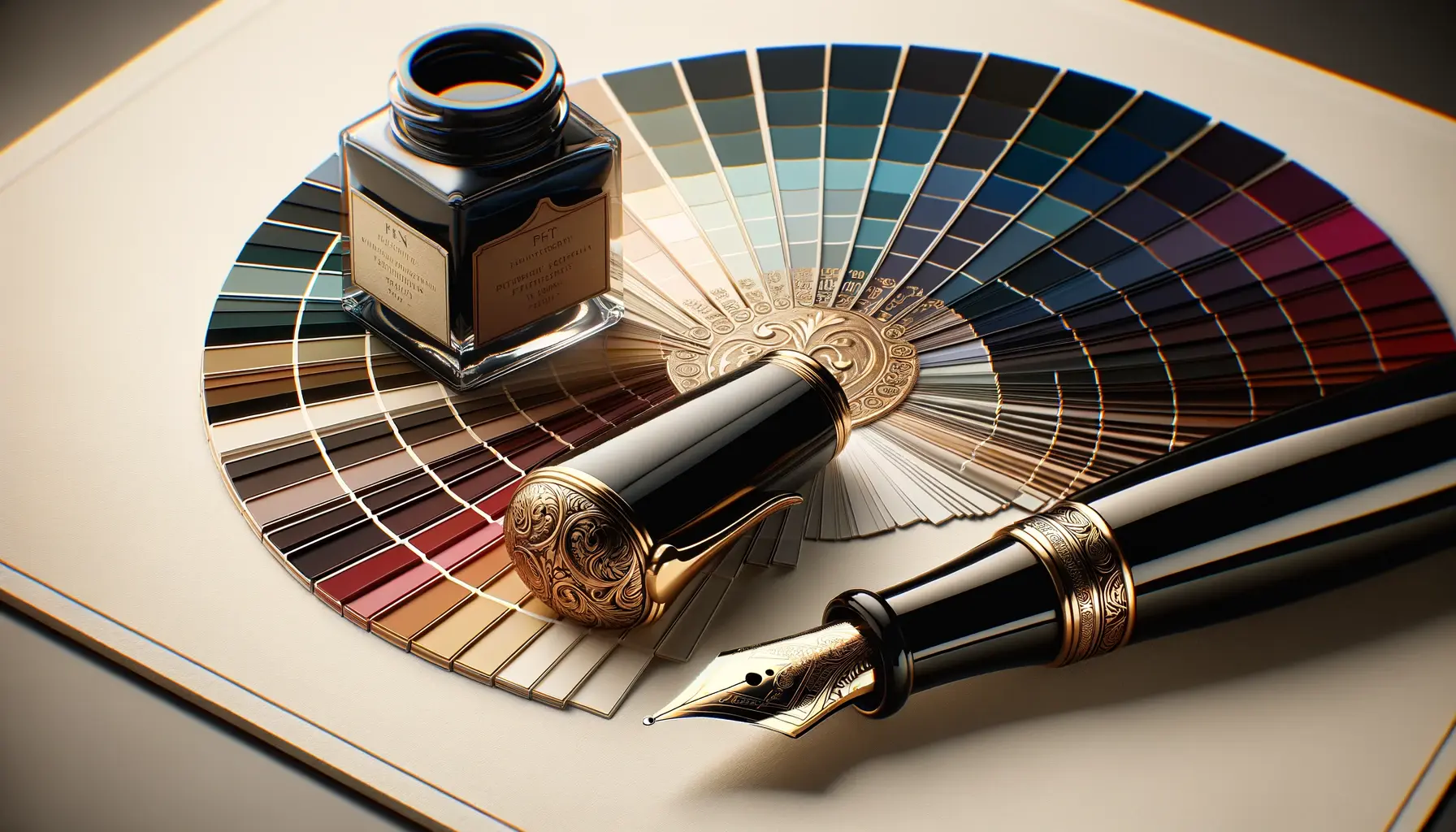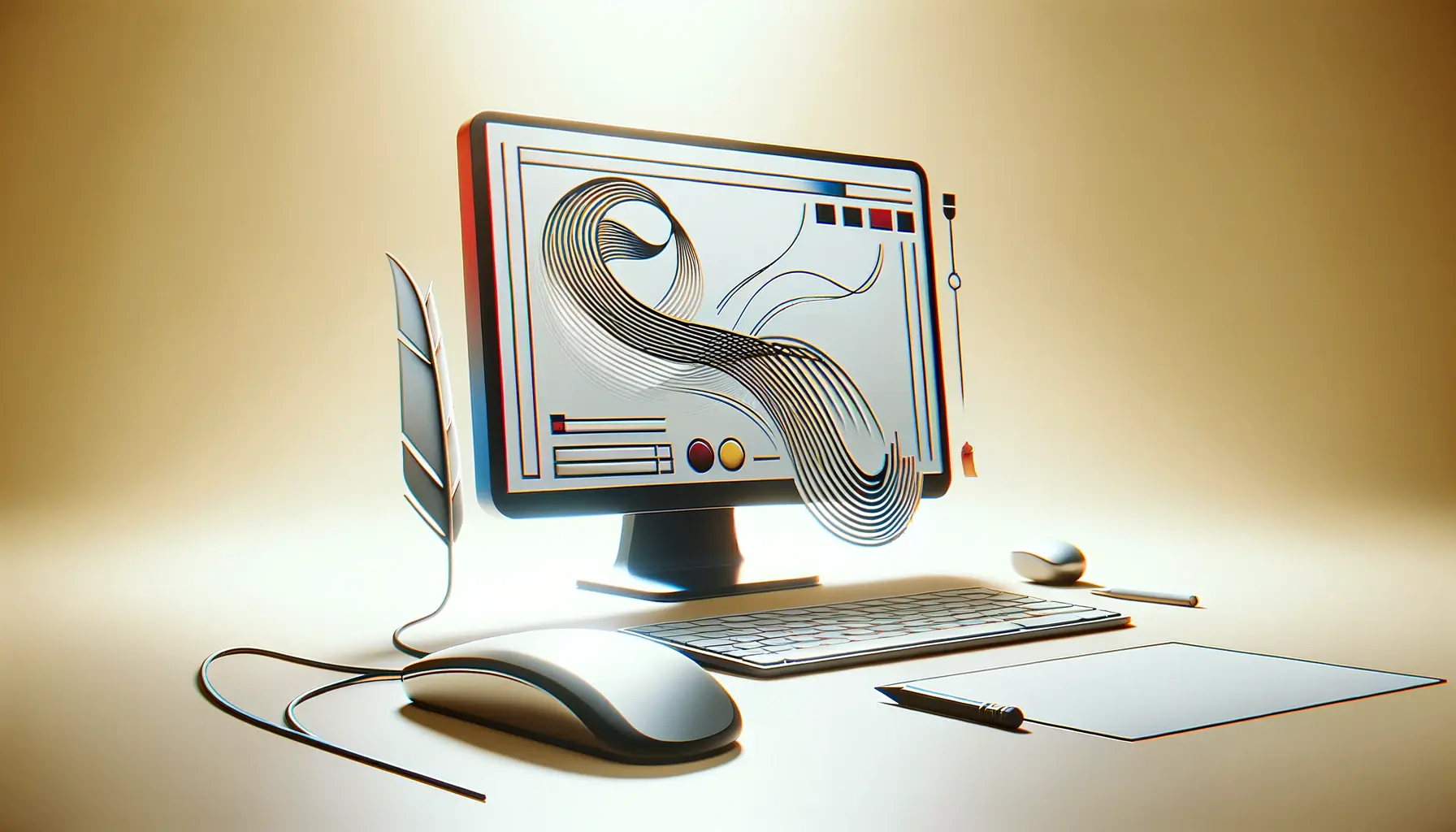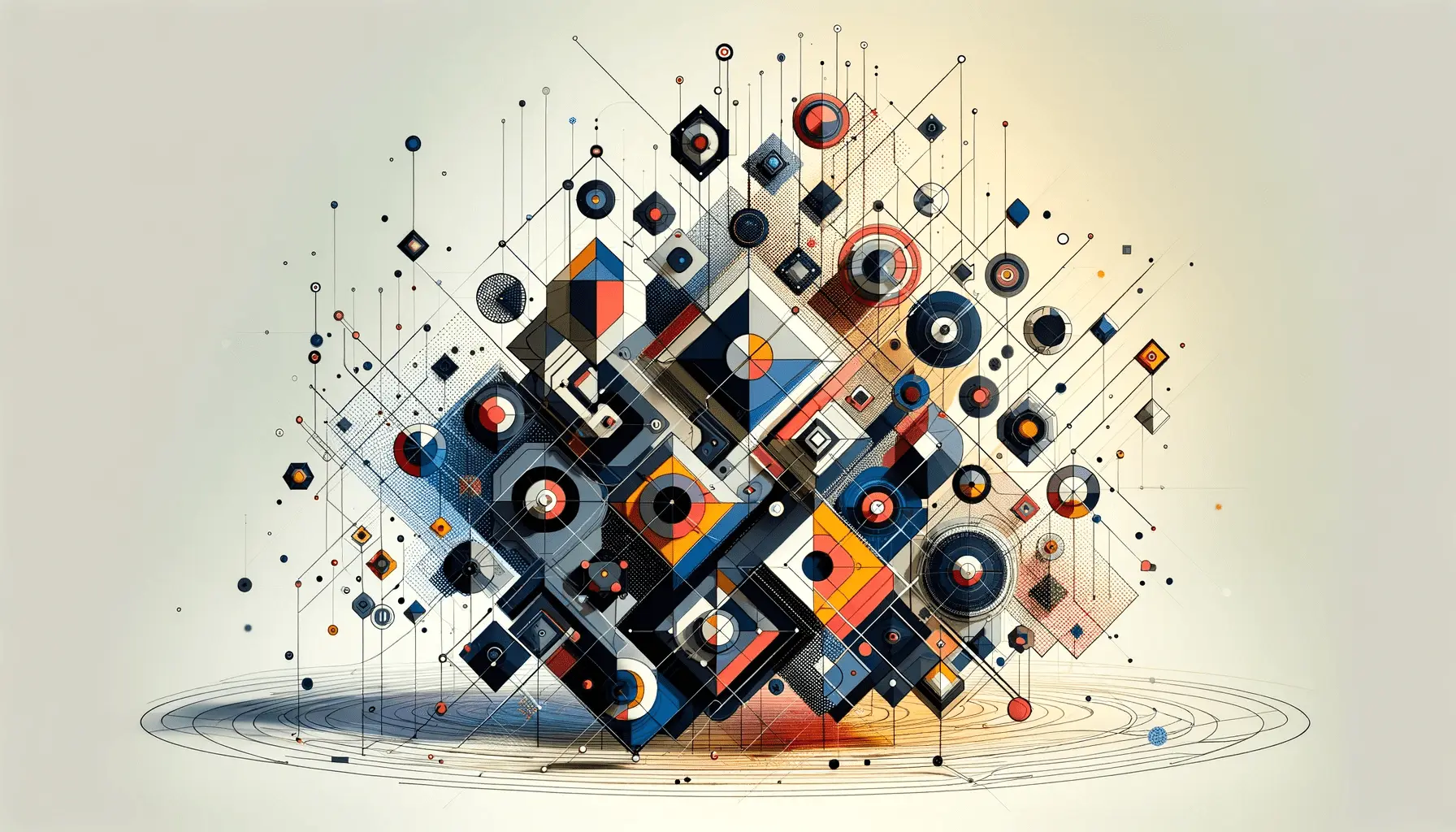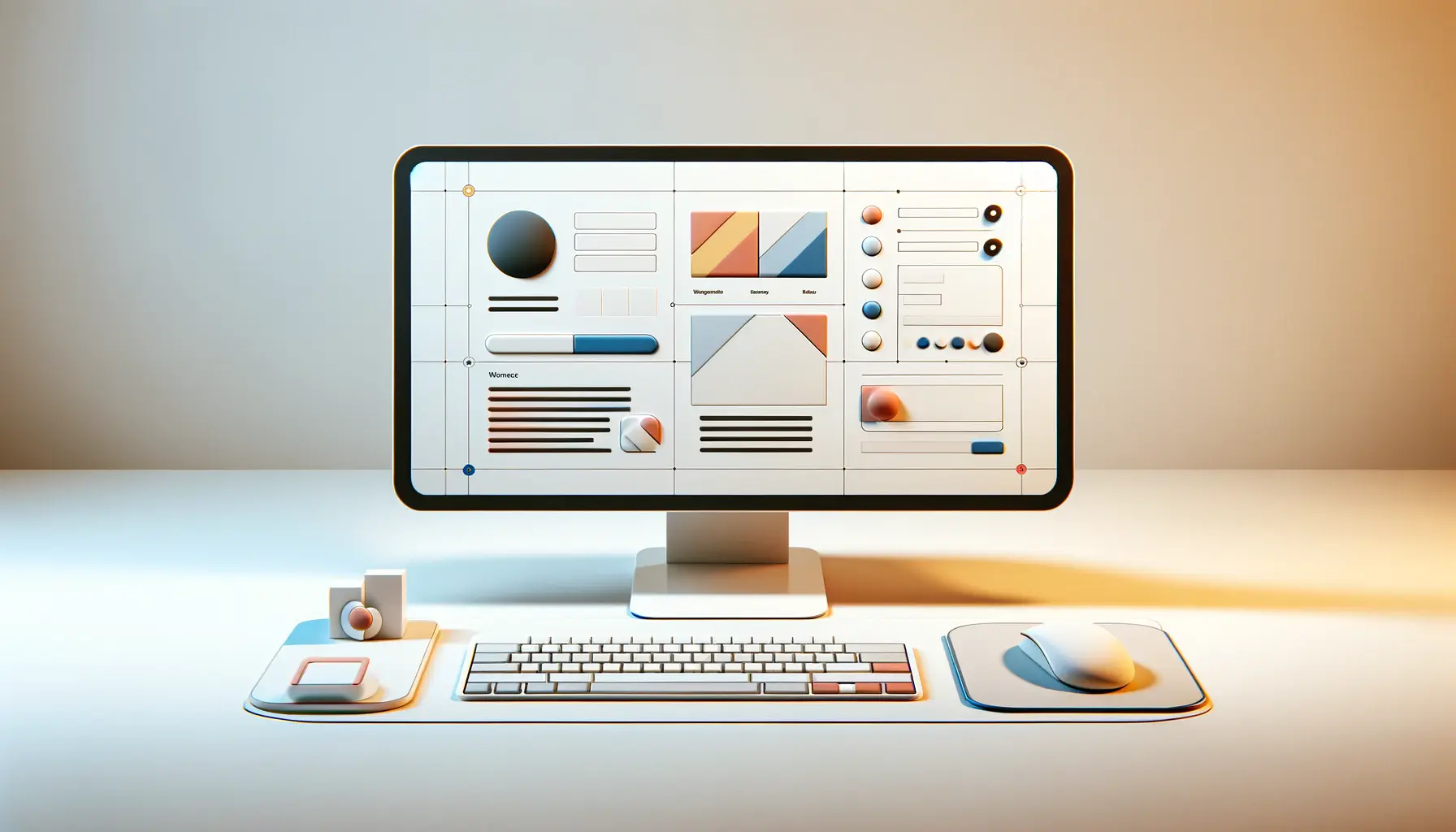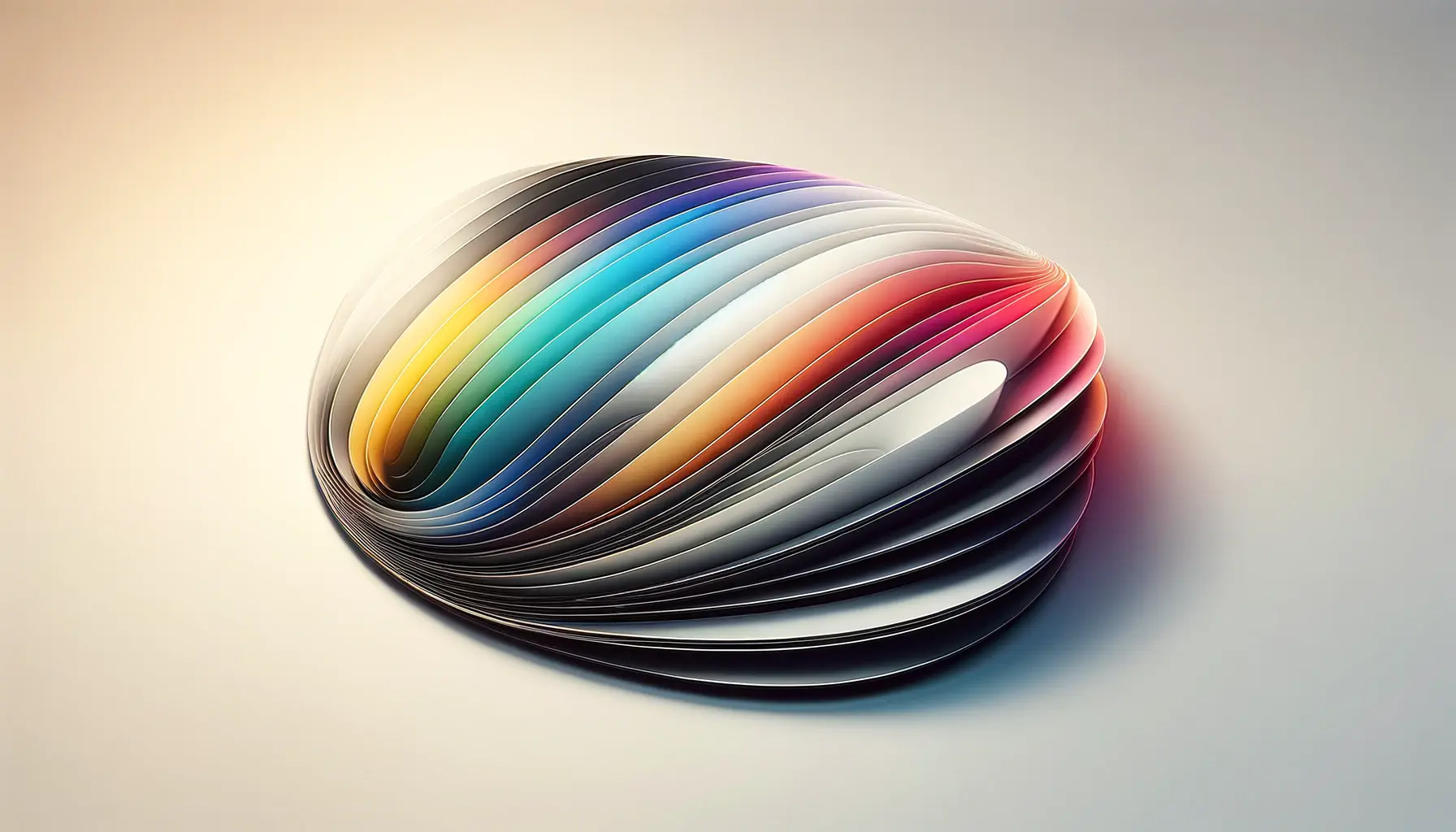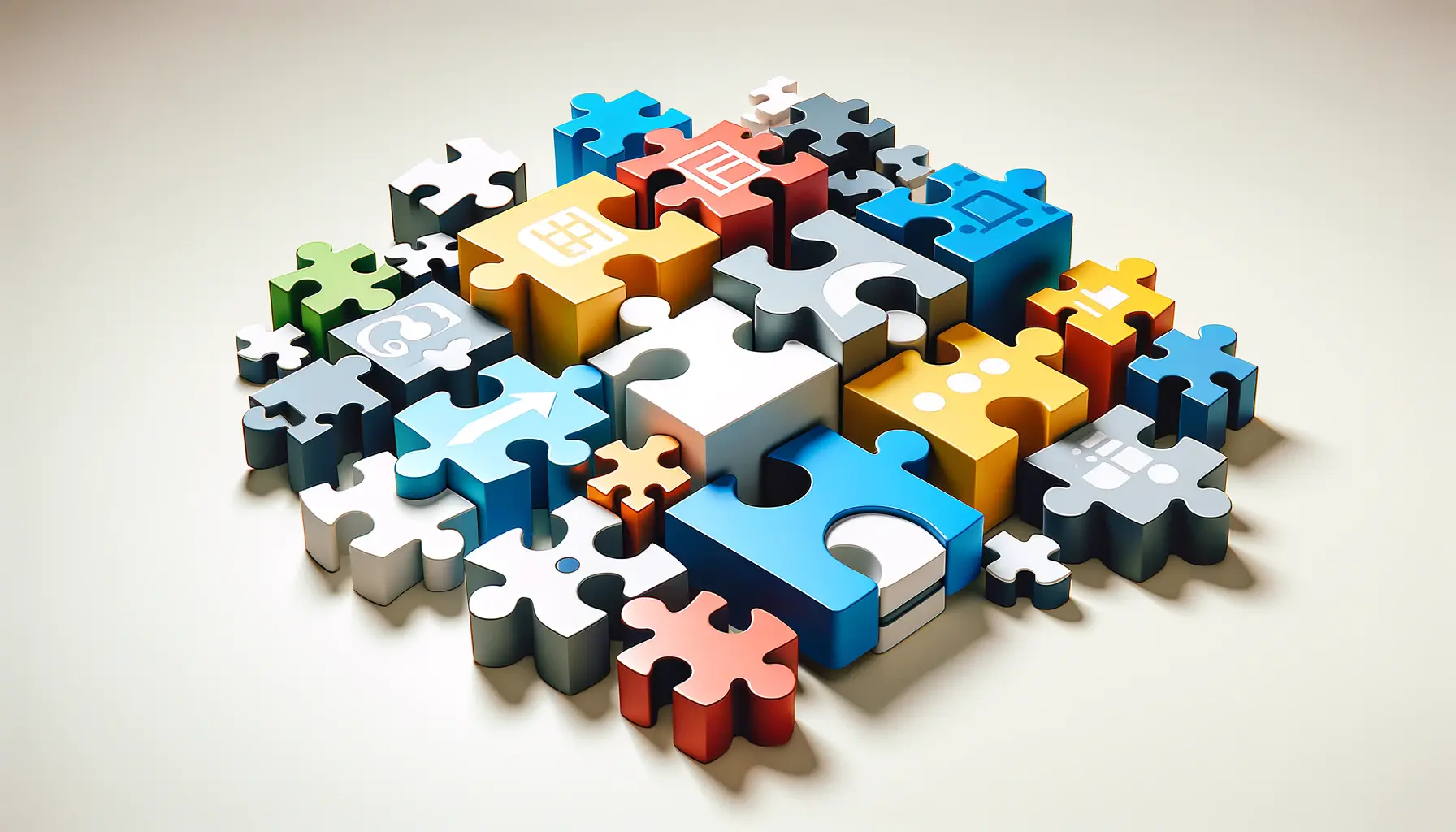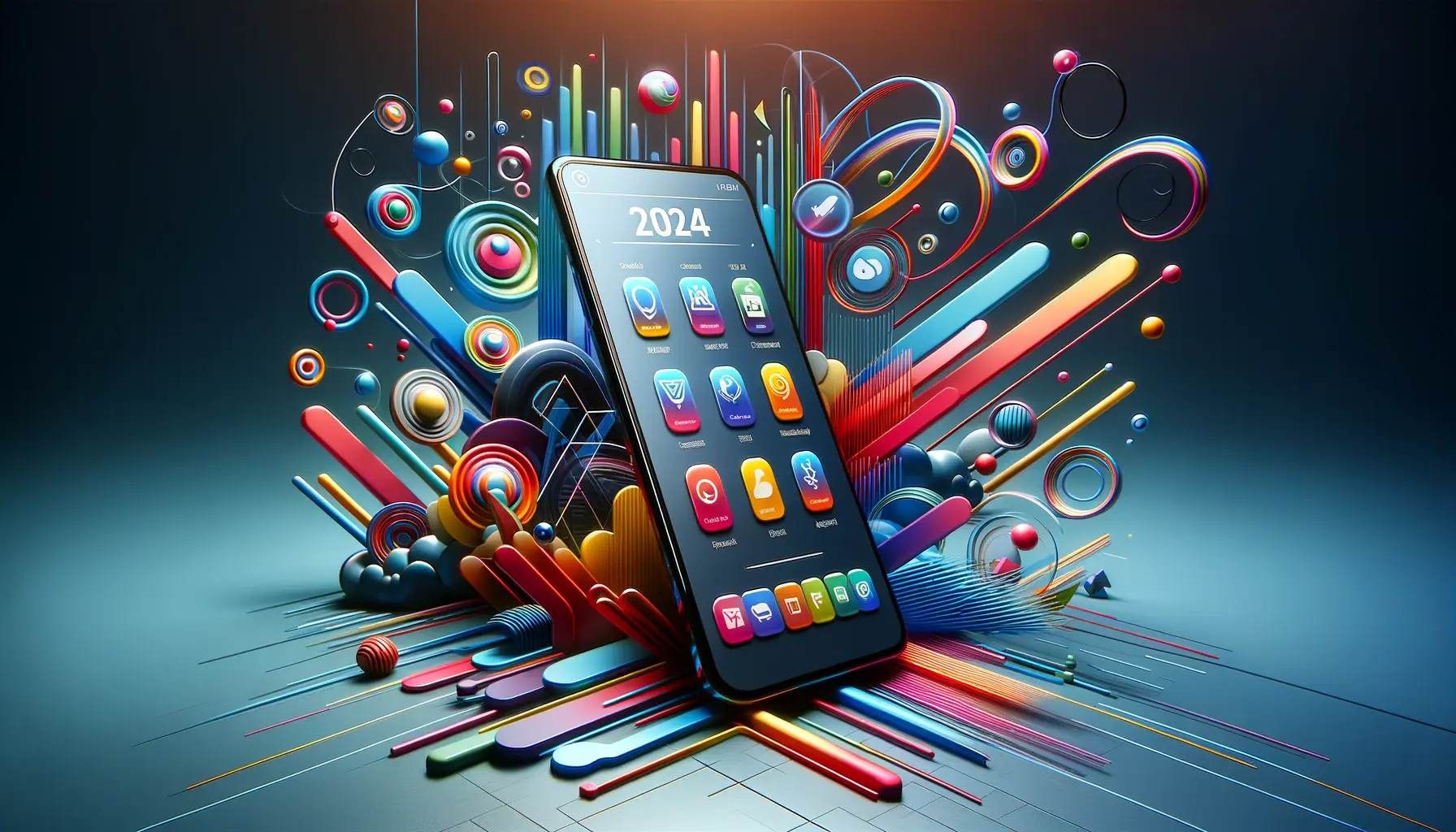Remember the good old days of the internet?
The dial-up beeps, blocky graphics, and plain layouts?
Those were the days when web designing was still in its nascent phase, but it had a certain charm that cannot be wiped off the memory.
Today, as we browse through minimalist and futuristic websites, there is a growing trend that looks back at those old-fashioned features.
This newfound interest is not necessarily about nostalgia itself; it’s about leveraging the emotional connection that we have to the past and applying it as a tool for designing engaging user experiences.
Let’s see what nostalgic web design is all about and why it’s becoming increasingly prominent.
Understanding Nostalgia in Web Design
Nostalgia in web design remakes the appearance of the recent decades based on elements of retro design to evoke nostalgia in users.
The method not only makes those with experience of the beginnings of the internet era nostalgic but also makes new generations become accustomed to the charm of past digital designs.
Defining Nostalgic Web Design
Nostalgic web design uses the visual and functional elements of past web decades.
This can include:
- Retro Color Schemes: Employing colors that were popular decades before, such as muted tones or gaudy neon colors.
- Vintage Typography: Employing fonts previously popular, imparting an aged look to modern content.
- Old-School Graphics: Utilizing pixel art, skeuomorphic graphics, or era-specific images to obtain the look and atmosphere of old websites.
Historical Context: Evolution of Nostalgic Elements
The internet has seen enormous transformations since it began.
Web design in the 1990s and early 2000s was characterized by:
- Plain Layouts: Basic HTML arrangements with minimal styling.
- Bright Backgrounds: Heavy use of vibrant colors and patterned backgrounds.
- Animated Graphics: GIFs and marquee text employed liberally to add an element of liveliness.
With the progression of technology, web designers began shifting towards minimalism, aiming at functionality and speed.
However, the unique beauty of earlier web designs created an enduring impact, leading to their revival in modern web design trends.
Psychological Appeal: Why Nostalgia Attracts Users
Nostalgia speaks to our emotions and creates a sense of comfort and familiarity.
When users see designs that remind them of the past, it can:
- Evoke Nostalgia: Bring to mind simpler times or significant personal moments.
- Enhance User Engagement: Encourage users to explore further as they have an emotional connection to the design.
- Make Brands Stand Out: Differentiate a website from a market saturated with modern, minimalist designs by offering a unique visual experience.
By understanding and implementing nostalgic elements thoughtfully, designers can craft websites that not only look appealing but also resonate deeply with users, fostering lasting connections.
Nostalgic web design leverages familiar visual elements to evoke emotions and create engaging digital experiences.
Major Nostalgic Web Design Features
Including nostalgia in web design involves strategically selecting elements that people remember from past times.
By using specific design components, you can make a site emotionally resonate with users, creating familiarity and engagement.
Let’s explore the major features that define nostalgic web design.
Retro Color Schemes
Color is a determining element in creating the mood of a website.
Nostalgic web design often incorporates retro color schemes such as:
- Earth Tones: Muted colors like avocado green, mustard yellow, and burnt orange, reminiscent of the 1970s.
- Pastel Shades: Soft pinks, blues, and mint greens, evoking the aesthetics of the 1950s and 60s.
- Neon Tones: Bright neon greens, electric blues, and vivid pinks, reflecting the vibrant pop culture of the 1980s.
Choosing the right color scheme can instantly transport visitors to a specific time, enhancing the nostalgic appearance of your website.
Vintage Typography
Typography plays a major role in how a website looks overall.
Employing old-style fonts can evoke a nostalgic feel.
Some popular choices include:
- Serif Fonts: Classic typefaces like Times New Roman or Baskerville that provide a traditional look.
- Script Fonts: Elegant, flowing styles reminiscent of mid-20th-century signage.
- Pixelated Fonts: Fonts resembling old computer and video game text, bringing back memories of the 1980s and 90s digital age.
Choosing the appropriate typography helps establish the era you wish to portray, ensuring a cohesive and genuine design.
Textured Backgrounds
Using textured backgrounds creates depth and credibility in a nostalgic web design.
Some popular textures include:
- Grainy Surfaces: Mimicking film grain or aged photographs to evoke a vintage feel.
- Paper Textures: Backgrounds resembling yellowed paper or parchment for an aged appearance.
- Fabric Patterns: Textures that mimic materials like denim, corduroy, or other era-specific fabrics.
These textures add a tangible, retro connection to a website, strengthening its nostalgic appeal.
Retro-Inspired Icons and Buttons
Retro-themed buttons and icons can enhance the nostalgic theme.
Consider the following features:
- Skeuomorphic Designs: Icons and buttons that replicate real-world objects, such as vintage radios or old cameras.
- Pixel Art Icons: Simple, blocky icons reminiscent of early computer graphics.
- Badge-Style Buttons: Buttons designed to look like vintage badges or patches, adding an old-school charm.
These design choices can create a sense of familiarity and engagement, tapping into users’ positive memories.
Timeless Layouts and Grid Systems
Applying classic layouts can enhance the retro look of a website.
Common elements include:
- Centralized Content: Positioning content in the center, reminiscent of early web pages.
- Framed Layouts: Utilizing borders and frames to enclose content, similar to vintage posters or old photographs.
- Multi-Column Layouts: Implementing newspaper-like columns to organize text and images.
These layout styles bring in the design sensibilities of the past, giving the website a nostalgic and structured appearance.
By incorporating these nostalgic web design elements thoughtfully, you can create a website that is not only visually appealing but also deeply engaging for users, making their browsing experience memorable and emotion-driven.
Retro color schemes, vintage typography, and pixel art bring nostalgic charm to modern websites while maintaining usability.
Impact of Nostalgic Design on User Experience
Using nostalgic elements in web design can have a significant impact on user experience, fostering an emotional connection and increasing engagement.
Nostalgia in web design is more than just aesthetics—it influences how users interact with a website, shaping their perception and overall satisfaction.
Let’s explore how nostalgia enhances user interaction and perception.
Emotional Engagement and Brand Loyalty
Nostalgic design evokes users’ fond memories, triggering a sense of comfort and familiarity.
This emotional connection can lead to increased brand loyalty, as users are more likely to engage and return to sites that elicit a positive emotional reaction.
By incorporating retro elements, brands can create immersive experiences that resonate with their audience on an intimate level, encouraging repeat visits and fostering strong customer relationships.
Balancing Nostalgia with Modern Functionality
While nostalgic aesthetics can enhance user experience, they should be complemented with contemporary functionality.
Modern users expect features such as fast loading speeds, mobile responsiveness, and intuitive navigation.
Therefore, integrating nostalgia should not compromise usability.
A balance between retro design and modern technology ensures that users can appreciate the visual beauty of the past while benefiting from the advantages of present-day web standards.
Case Studies: Successful Nostalgic Web Designs
Several brands have successfully embraced nostalgic design to engage their audiences:
- Stranger Things Website: The Netflix website for ‘Stranger Things’ incorporates 1980s-inspired graphics and typography, aligning with the show’s era and resonating with fans’ nostalgia.
- Coca-Cola’s ‘Share a Coke’ Campaign: By reintroducing retro branding elements, Coca-Cola connected with consumers’ memories, reinforcing brand identity and boosting sales.
- Apple’s iOS 6 Skeuomorphic Design: Early versions of iOS featured skeuomorphic design elements, mimicking real-world objects to provide familiarity and ease of use for users transitioning from non-touch devices.
These examples demonstrate that when executed properly, nostalgic design can create long-lasting user experiences that connect at an emotional level, leading to increased engagement and brand loyalty.
Integrating nostalgic elements with modern web functionality can create an emotionally engaging experience without sacrificing usability.
Using Nostalgic Elements in Modern Web Design
Merging nostalgic elements with modern web design can create an emotional connection with users.
However, it must be done responsibly to ensure that while nostalgia enhances user engagement, it does not compromise functionality.
Below are key factors to consider when incorporating nostalgia into your web designs.
Identify the Appropriate Era and Elements
Start by deciding which time period or cultural aspects align with your brand and audience.
This may include:
- Researching Target Demographics: Understanding users’ age groups and cultural backgrounds to choose nostalgic features that resonate with them. For instance, using 1980s-inspired video game aesthetics may appeal to users who grew up during that period.
- Choosing Appropriate Visuals: Selecting design elements such as color palettes, fonts, and images that genuinely capture the essence of the chosen era. For example, incorporating pixel art or 8-bit visuals can evoke a 90s video game feel.
Balance Nostalgic Aesthetic with Current Functionality
While nostalgic design can boost user interaction, it is essential to ensure that the website meets modern usability standards.
Achieve this balance by:
- Maintaining Responsive Design: Ensuring the site is both functional and visually appealing on various devices and screen sizes.
- Optimizing Load Speed: Utilizing modern coding techniques to keep the site fast and responsive, even with nostalgic design elements.
- Making Navigation Easy: Keeping navigation intuitive and straightforward despite the vintage-inspired design to meet contemporary user expectations.
Test and Collect User Feedback
Before fully implementing nostalgic elements, it is advisable to test their effectiveness:
- Conduct A/B Testing: Measuring user engagement between a nostalgic design and a more modern version to assess its impact.
- Gather User Feedback: Soliciting user opinions to determine how nostalgic elements influence their experience and perception of the brand.
By thoughtfully incorporating nostalgic elements that appeal to your audience while maintaining modern usability, you can create a website that is both emotionally engaging and functionally effective.
Striking the right balance between nostalgia and modern design ensures both emotional appeal and smooth user interaction.
The Future of Nostalgic Web Design Trends
In the future, nostalgic web design will continue to evolve, blending vintage styles with modern innovations to create unique user experiences.
These hybrids not only engage users’ emotions but also help brands stand out in a highly competitive digital space.
Let’s explore the emerging trends that will define the future of nostalgic web design.
Retro-Modern Mashups
Combining retro visuals with contemporary elements is an increasingly popular trend.
This approach leverages familiar nostalgic aesthetics while ensuring modern functionality.
Key elements include:
- Vintage Animations: Using classic animation techniques to evoke familiarity and nostalgia.
- Arcade-Style Graphics: Incorporating neon colors and pixelated visuals reminiscent of early video games.
- Analog Effects: Adding grainy textures or film-like overlays to digital interfaces.
These elements create a seamless blend of past and present, enhancing user engagement.
Subtle Nostalgia
Incorporating understated retro elements allows designers to evoke nostalgia without overwhelming users.
Techniques include:
- Vintage Graphics: Using illustrations and photographs inspired by past decades.
- Classic Typography: Selecting fonts that reflect historical design styles.
- Muted Color Palettes: Employing colors that subtly hint at a previous era.
This approach provides a broad appeal, delivering a sense of familiarity without making the design feel outdated.
Retro-Futurism
Retro-futurism merges nostalgic and futuristic elements to create a visually unique and captivating design.
Some key characteristics include:
- Skeuomorphic Features: Designing elements that mimic real-world objects.
- Glossy Textures: Utilizing shiny surfaces and vibrant colors.
- Nature-Inspired Imagery: Blending natural elements like blue skies, grass, and water with futuristic technology.
This aesthetic reflects a time of technological optimism, appealing to users who appreciate both nostalgia and innovation.
Resurgence of Nostalgic Aesthetics
Some nostalgic aesthetics are making a comeback and influencing modern web design:
- Frutiger Aero: A mid-2000s aesthetic featuring bright colors, reflective textures, and nature-inspired imagery, gaining popularity among Gen Z.
- Y2K Style: A late 1990s and early 2000s-inspired design trend incorporating synthetic textures and metallic sheens.
These revivals allow designers to tap into specific cultural memories, creating targeted emotional connections with users.
Interactive Nostalgic Experiences
Developers are creating websites that provide immersive nostalgic experiences, allowing users to relive digital moments from the past.
An example includes:
- IMG_0001: A website featuring random YouTube videos from early iPhones, serving as a time capsule of early smartphone videography.
These projects highlight a growing desire to preserve and revisit digital nostalgia, influencing web design trends in the coming years.
Incorporating nostalgic elements into web design is a powerful way to connect with users on an emotional level.
By blending retro aesthetics with modern functionality, designers can create engaging and memorable experiences that resonate across generations.
Retro-modern mashups, interactive nostalgia, and AI-powered personalization will shape the next wave of nostalgic web design.
The Lasting Influence of Nostalgic Web Design
Nostalgic web design isn’t just a passing trend; it’s a powerful tool that designers and brands use to forge deep emotional connections with users.
By integrating elements from the past, web designers create engaging experiences that evoke familiarity, comfort, and a sense of belonging.
As outlined throughout this article, nostalgia in web design is a careful blend of old-school aesthetics and modern technology.
Why Nostalgia Remains Effective
Nostalgic design is effective because it taps into personal experiences and deep-rooted emotions.
When users encounter familiar elements from their past, they feel a sense of credibility and connection.
This emotional link can lead to:
- Increased Brand Loyalty: Websites that evoke positive emotions encourage users to return and engage more frequently.
- Higher Engagement: Nostalgic elements spark curiosity and encourage users to explore more content.
- Memorable Experiences: The combination of retro visuals with modern functionality leaves a lasting impression.
Balancing Nostalgia with Modern Design Principles
While nostalgic web design is popular, it should never come at the cost of usability.
The most successful nostalgic websites seamlessly blend vintage styles with contemporary functionality.
Key factors to consider include:
- Responsive Design: Ensuring that nostalgic elements adjust well to different screen sizes and devices.
- Optimized Performance: Avoiding outdated web practices that could slow down the site.
- User-Friendly Navigation: Keeping interfaces intuitive and accessible, even when using retro-inspired designs.
The Future of Nostalgic Web Design
As digital trends evolve, nostalgic web design will continue to be reinvented in new and innovative ways.
The resurgence of aesthetics such as Y2KA late 1990s and early 2000s aesthetic featuring synthetic textures, metallic sheens, and futuristic elements. style, Frutiger AeroA design aesthetic from the mid-2000s characterized by glossy textures, gradients, and nature-inspired imagery., and skeuomorphism proves that designers are constantly finding fresh approaches to reimagine past inspirations.
Future trends suggest that nostalgic web design may incorporate:
- AI-Powered Nostalgia: Machine learning could be used to personalize nostalgic experiences based on a user’s digital history.
- Interactive Throwbacks: Websites may feature interactive elements inspired by classic web experiences, such as early chatrooms or animated splash pages.
- Blended Reality: The integration of virtual and augmented reality to recreate iconic digital moments from the past.
Final Thoughts: Creating Meaningful Digital Experiences
Nostalgic web design highlights the power of emotion in digital storytelling.
It enables brands to build stronger connections with their audiences while paying homage to influential design styles from the past.
By thoughtfully blending nostalgic elements with modern web standards, designers and businesses can create websites that are visually captivating, highly functional, and emotionally compelling.
As the digital landscape continues to expand, nostalgia will remain an essential tool for crafting memorable web experiences.
Whether your goal is to evoke emotion, establish a unique brand identity, or celebrate the past, nostalgic web design is here to stay—blending history with innovation in ways that continue to inspire and captivate.
While nostalgia can enhance user experience, designers must avoid outdated practices that may hinder performance and accessibility.
Quality web design is key for a great website! Check out our service page to partner with an expert web design agency.
Frequently Asked Questions on Nostalgic Web Design
With the growing trend of nostalgic web design, many people are curious about its application and impact.
Here are some of the most frequently asked questions to enhance your understanding of this evolving design approach.
Nostalgia in web design refers to the use of design elements from past decades, creating a sense of familiarity and emotional connection for users, making them feel comfortable and engaged with the website.
Nostalgia is trending in web design because it evokes emotions, offering a unique and comforting user experience that stands out in the modern digital space.
Nostalgic web design enhances user experience by triggering emotional connections, leading to higher engagement and a more memorable interaction with the website.
Yes, nostalgic design can strengthen brand perception by making the brand feel more relatable, trustworthy, and memorable through emotional associations.
Common nostalgic elements include vintage color schemes, classic typography, pixel art, skeuomorphicA design approach that mimics real-world objects and textures in digital interfaces. design, and retro-style illustrations reminiscent of past digital eras.
Balancing nostalgia with modern design involves incorporating retro elements while ensuring usability, responsiveness, and functionality remain aligned with contemporary web design standards.
Nostalgic web design is generally appealing, but its effectiveness depends on the target audience’s connection to the referenced era and their digital experiences.

